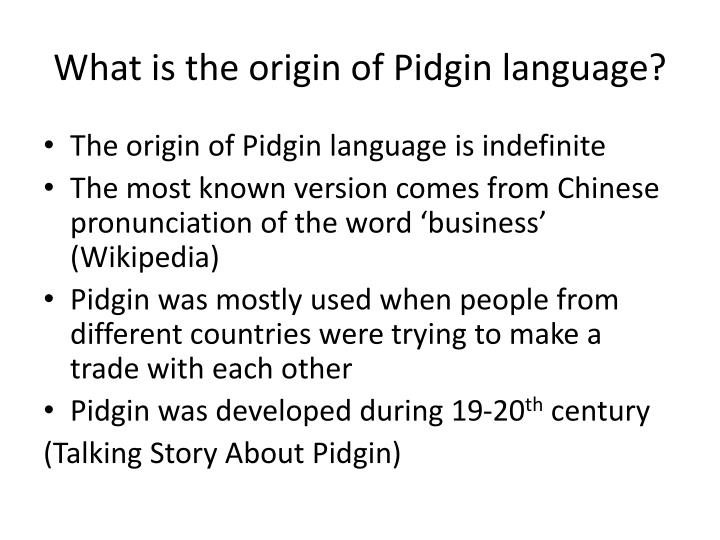
Its origin in the 18th century and its demise in the 20th, Chinese Pidgin English undoubtedly underwent substantial changesĭescription in this chapter focuses on the 19th century when Chinese Pidgin English was widely used in the China trade and in the treaty ports.Īre available from the China trade period: (i) Pidgin phrases cited in Western (Guangzhou), later Hong Kong and (from 1842) the treaty ports of Xiamen,įuzhou, Ningpo and Shanghai. Limited settings in which such trade was permitted: initially Whampoa and Canton Was used primarily between European traders and Chinese merchants in the

Main substrate language, but there are also lexical items from Malay, Hindi and Scandinavian languages, as wellĪs Portuguese ( Bolton 2003: 180–85 and Appendix 4) see §10 on Chinese Pidgin English lexicon. Portuguese as the medium of communication ( Van Dyke 2005: 77). As the China trade developed, Pidgin English replaced The earliestĪttestations of Chinese Pidgin English show strong Portuguese influence ( Tryon Portuguese for cross-cultural communication ( Bawden 1996). Macanese phrases are represented in Chinese characters, attest to the use of Phrasebooks from Macau, in which Portuguese or Earlier Chinese-European contact in this area had At this time the China trade was developing, withīritish, other European and later American ships visiting Macau, Whampoa andĬanton (now Guangzhou). Sociohistorical backgroundĬhinese Pidgin English is first attested in around 1715 in reports from the Pearl Riverĭelta ( Morse 1926: v.1, 67). Presenting numerous problems of interpretation Historical importance it is poorly documented, with the available sources


Chinese Pidgin English is effectively extinct and despite its

Languages such as Hawai'i Creole and Melanesian Pidgin ( Tok Pisin,īislama). In Chinese Pidgin English, and the influence of the language extends to contact The term “pidgin” itself is first attested Chinese Pidgin English is one of the earliest


 0 kommentar(er)
0 kommentar(er)
